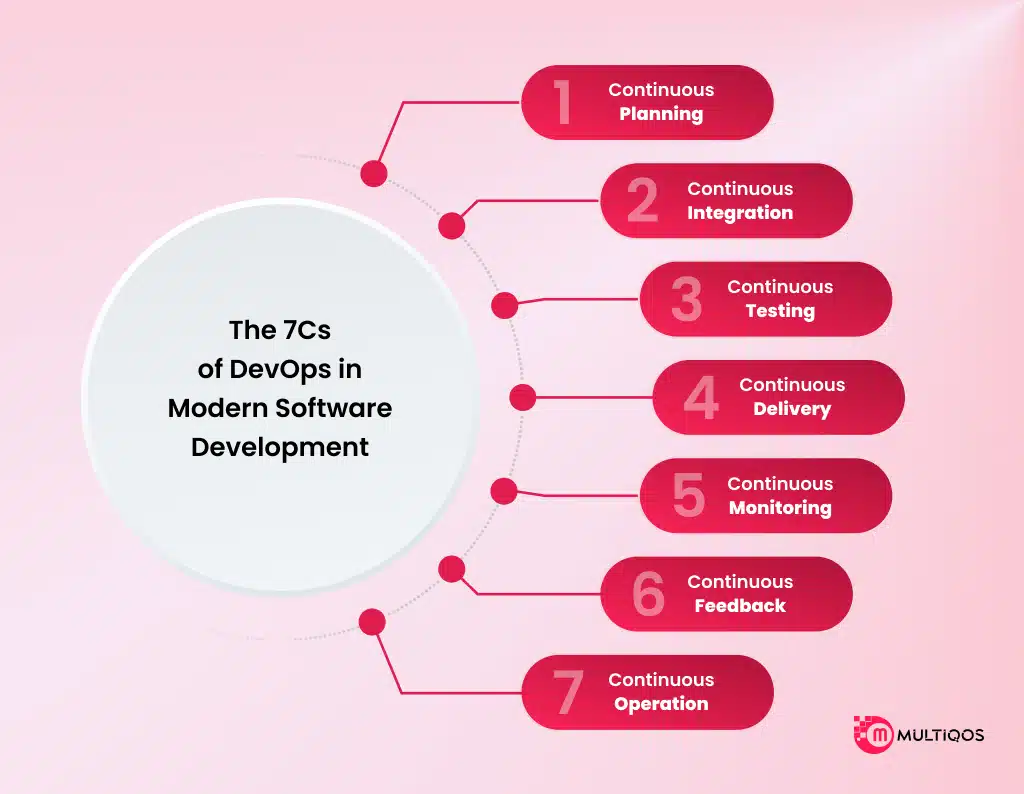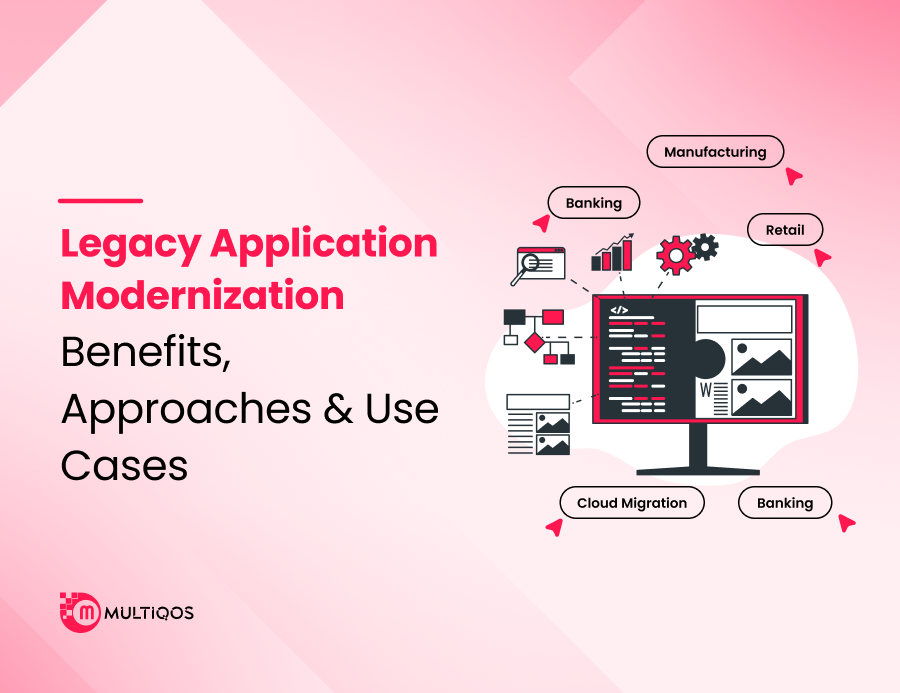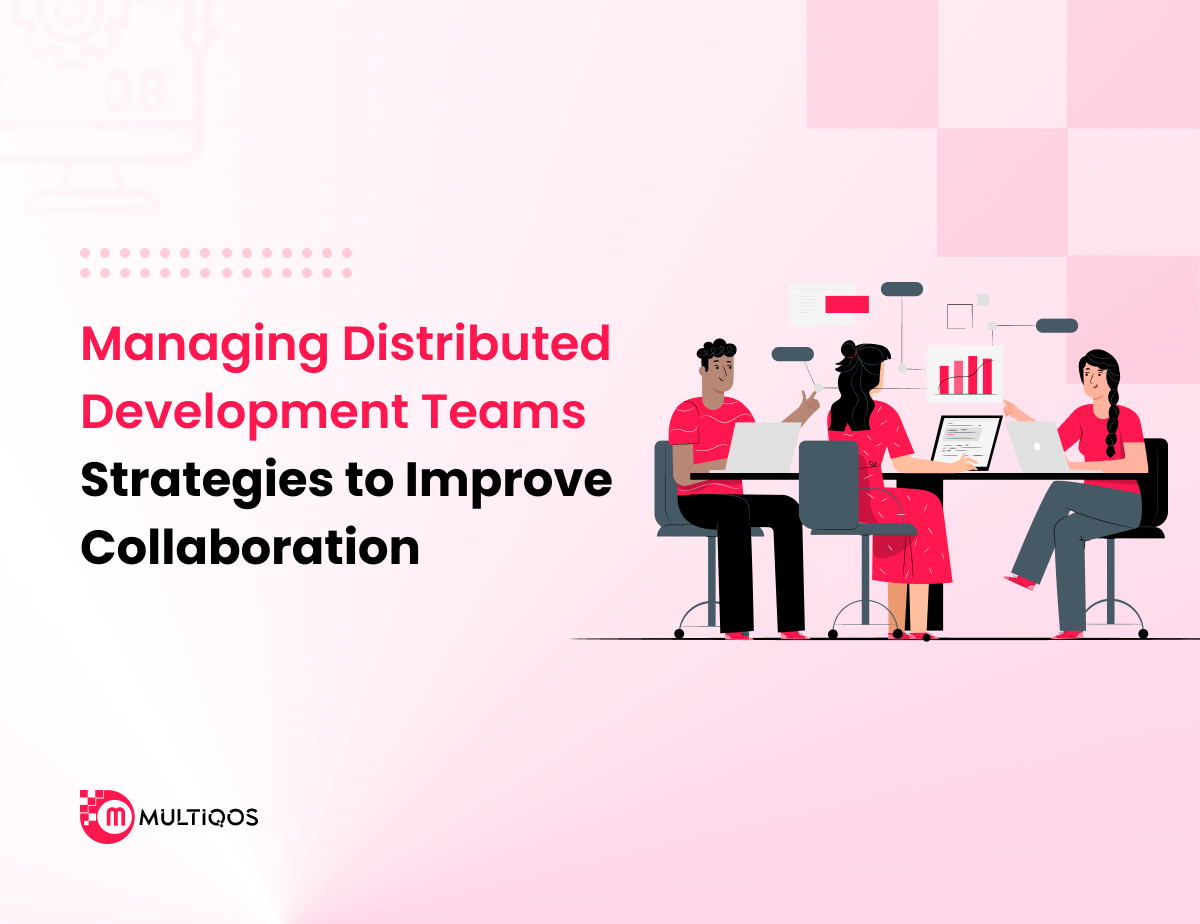The Power of DevOps in Modern Software Development

Summary :
DevOps has emerged as a game-changer in modern software development. This blog explores how DevOps bridges the gap between development and operations to streamline workflows, enhance collaboration, and accelerate delivery cycles.
From continuous integration and deployment (CI/CD) to automated testing and infrastructure as code (IaC), discover how DevOps practices drive innovation, improve software quality, and reduce time-to-market.
Whether you’re a developer, tech leader, or business decision-maker, this guide highlights the transformative impact of DevOps in building scalable, reliable, and efficient software systems.
Introduction
The delivery and development of software have drastically changed in the past few years, and this is especially true with the DevOps implementation in modern development practices. Instead of working in separate silos, development, and operations, teams have merged to work closely in order to streamline processes, make rapid iterative changes, and manage automation while maintaining system thoroughness and stability.
This enables businesses not only to improve feature release cadence but also to improve system trustworthiness and responsiveness in addition to business value. The evolution of technology continues to evolve; hence, embracing changes from trends like DevOps cannot be ignored in today’s digitally transformed landscape.
What is DevOps?
DevOps combines developers and IT operations through collaboration, which simplifies the processes of building, testing, and releasing software. Unlike older methods where different teams work in silos with little to no interaction between them, members now interact from the planning stage onward and assume various roles which help in automating numerous tasks such as testing and deployment.
The use of automated tools for bug identification frameworks, fast-update mechanisms, and prompt changes ensures that systems are fortified continuously. With all these in place , links between departments are readily facilitated for faster response times thereby embracing an agile approach while enforcing strict quality control.
Benefits Of DevOps In Modern Software Development
Here are some of the top benefits of using DevOps in modern software development. These advantages show why more teams are adopting DevOps to build better software, faster—take a look below!
1. Faster Delivery
The use of automation in combination with continuous integration enhances a team’s ability to issue updates and new features significantly as compared to older methodologies.
2. Improved Quality
A series of tests is conducted on the software before release, and this improves early error detection, if any, enhancing overall product stability and reliability.
3. Greater Productivity
Streamlining processes fetches more productivity and better results when teams automate monotonous tasks like testing and deployment. Teams can innovate even further because diagnostics and manual errors have been greatly reduced.
4. Quick Recovery from Failures
A problem pinpointing system is swift, allowing quick restoration of functions after analyzing complex structures that may cause issues. Smaller update patches allow immediate diagnostics on the failure point, making frequent updates much easier to retrieve should anything go wrong.
5. Scalability & Flexibility
Cloud-based practices can aid in adjusting systems faster with DevOps tools, ensuring the smoothest possible recovery during monitoring sessions. Serried information combined with increased demand will not hinder usability or require lots of restructuring for future capacity reduction.
6. Continuous Improvement
Each team fundamentally embraces continuous feedback cycles, along with system checks and iterative modifications, making relearning mandatory after every software release. Thus, products along with processes get refined over time.
The 7Cs of DevOps in Modern Software Development
The 7Cs of DevOps describe a continuous collaborative practice in which efficiency and quality are enhanced in the DevOps in modern software development. These linked phases guarantee that program construction, testing, delivery, and subsequent enhancement happen seamlessly and continuously.
1. Continuous Planning
This is the initial stage where all the stakeholders , such as developers, operations, quality assurance, and business units meet to set objectives, refine frameworks for task prioritization, agree on milestones, and structure release cycles. It allows for collaborative early contribution that smoothens planning, minimizing later changes.
2. Continuous Integration
Developers usually add code to a communal repository daily, that too multiple times. Every addition goes through an automatic testing procedure that checks for bugs, helping to identify and remedy problems promptly. With this method, issues related to integrations are minimized, and the codebase remains balanced and available at any moment for deployment.
3. Continuous Testing
Automated tests are a requirement in DevOps. With every modification, tests are done to ensure that the code is functioning correctly and that the application performs optimally while remaining secure. Bugs are solved early on, and continuous testing greatly improves the quality of the software.
4. Continuous Delivery
This walks us through the logic of how software can be published to the production environment “anytime”. After passing automated tests, the code is packed and queued for release. This process is useful in eliminating manual work, resources, and demands minimal effort to push updates.
5. Continuous Monitoring
If you’re using monitoring tools, it becomes easy for you to track system indicators, user activity logs, and KPIs that too, in real-time. Such tools automate information gathering, which leads to knowledge of the current state of production environments instantly. This helps avoid reactive responses by resolving problems before users face challenges.
6. Continuous Feedback
You’ll be surprised to know that every phase of DevOps lifecycle consist of a feedback loop. From user satisfaction and performance analytics to team retrospectives, ongoing feedback allows continuous pivots with constant improvement on products and processes.
7. Continuous Operation
Today’s software systems do not allow any downtime. A business’s strategy for continuous operation seeks to provide high availability and reliability of the core systems, which are critical to the business during frequent updates and scaling activities of the system.
Conclusion
DevOps in modern software development does not only sit as a methodology, rather it is a paradigm which enhances the collaboration and helps accelerate delivery while keeping quality in every stage of the development process. With DevOps ax adoption, organizations can be agile and responsive to changing market requirements while improving product iteration.
When looking to execute effective DevOps strategies, acquiring the proper talent for your organization should be a core focus. Hire software developers who understand software development principles and are capable of adapting to a culture marked by automation, teamwork, and constant delivery cycles. The ideal team will help bring your vision of DevOps-driven value creation into reality.
FAQs
Core practices include continuous integration (CI), continuous delivery (CD), automated testing, infrastructure as code (IaC), continuous monitoring, and collaboration between cross-functional teams.
Start by fostering a collaborative culture, identifying automation opportunities, implementing CI/CD pipelines, and using tools like Jenkins, Docker, Kubernetes, and Git for streamlined workflows.
If we talk about traditional development methods, working in silos results in slower delivery and the chances of error detection increase. Whereas when it comes to DevOps, it removes these silos which enables faster development, real-time issue resolution, and agile deployments.
Get In Touch







